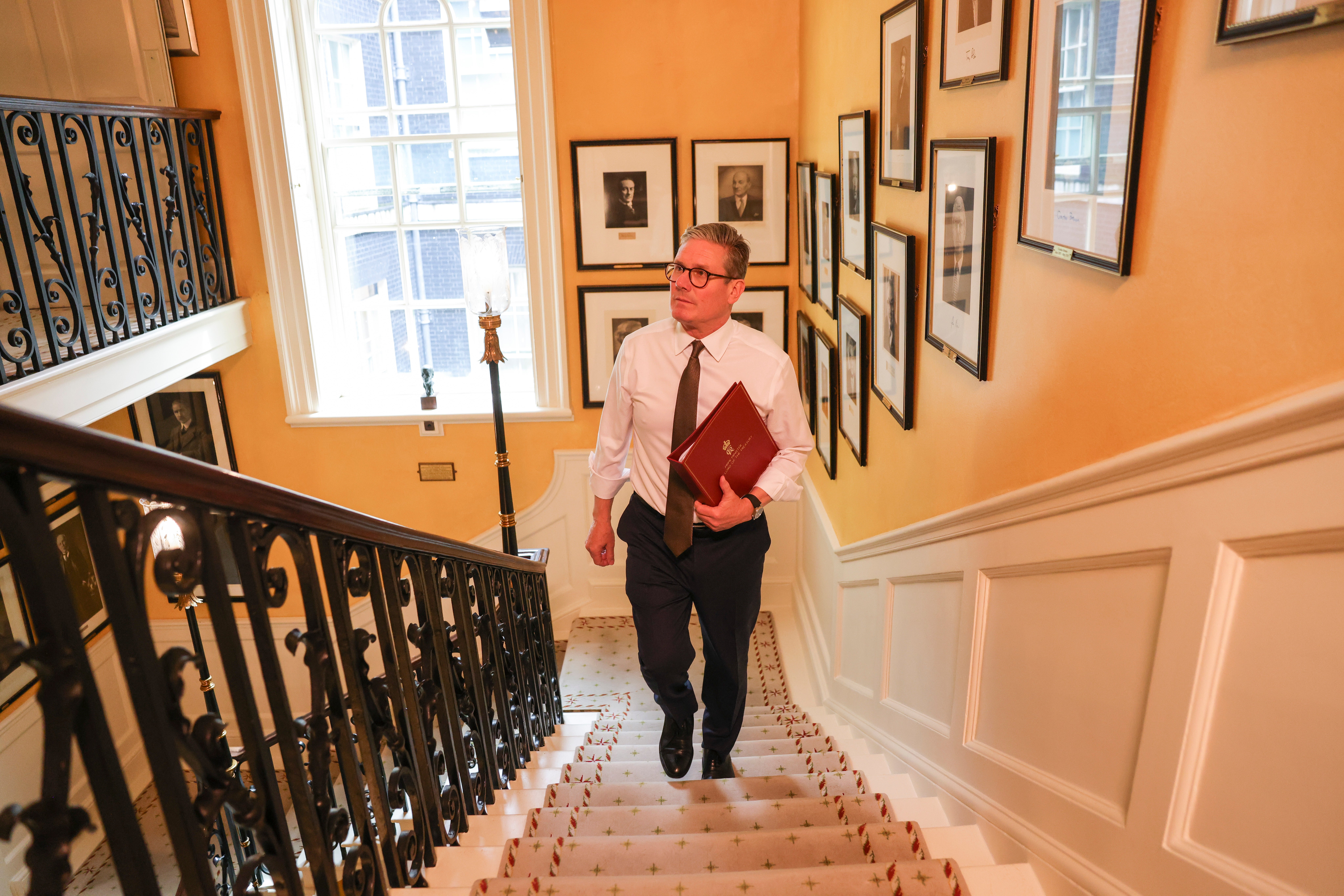Maggie’s vanishing portrait sounds trivial – but it says so much about Keir Starmer
A non-story about moving an ‘unsettling’ Downing Street painting matters for what it reveals about the impulses that drive No 10’s current occupant, says John Rentoul


One of the laws of journalism is that there are some news stories that are either a tiny, gossip-column item or a front-page lead – they cannot be anything in between. “Keir Starmer moved the portrait of Margaret Thatcher” is one of those.
It was an aside in a talk given by Tom Baldwin, Starmer’s biographer. He said that one of his interviews with the new prime minister had taken place in the Thatcher Room, the first-floor office that the former prime minister used as her study.
“We sat there, and I go: ‘It’s a bit unsettling with her staring down at you like that, isn’t it?’” Starmer agreed – and when Baldwin asked whether he would “get rid of it”, the prime minister nodded, Baldwin said. “And he has.”
On one level, the story is trivial. The painting has not been “taken down”, as I understand it; it has been moved to somewhere else in No 10. Starmer, who likes the Thatcher Room as a “place where we can go and have a quiet talk”, according to Baldwin, is entitled to decorate the place as he wishes.
But on another level, the story is momentous. Which is why it was on the front page of the Daily Mail on Friday: “Outrage as Starmer removes Maggie’s portrait.” In a postmodern twist to the story, part of its significance comes from its being the front-page lead in the Mail.
The newspaper that prides itself on having its finger on the pulse of popular conservatism in Britain has identified this as a symbol of something bad about the Starmer government. The nature of that something being spelt out in the subheadline: “Gesture of astonishingly petty vindictiveness against a political giant – by PM of just 7 weeks.”
Well, it’s a point of view, isn’t it?, as Ken Clarke once said when one of Thatcher’s more vivid opinions was relayed to him in front of a TV camera. You would have to have quite an unusual world view to see the moving of a painting as an act of revenge – but the Mail is on to something about the significance of the “gesture”.
Moving the portrait – by Richard Stone, which depicts Thatcher in 1982, after the Falklands War – is symbolic. Just as commissioning it and hanging it (and renaming the room the Thatcher Room) were symbols. The painting was commissioned by Gordon Brown in 2007, and he invited Baroness Thatcher herself to No 10 for the unveiling of it in 2009. He wanted to broadcast a message about his being a broad-based government that would seek to win the votes of those who admired the Iron Lady.
Brown did a lot of that kind of thing, hoping to offset the caricature of him as a pessimistic Scots presbyterian socialist. He maintained a surprising personal friendship with Paul Dacre, editor of the Mail at the time.
Not so long ago, Starmer appeared to be copying the same symbolism. In December, he wrote for The Sunday Telegraph about how Thatcher “sought to drag Britain out of its stupor by setting loose our natural entrepreneurialism”. He was copying Brown, who was copying Tony Blair, in praising Thatcher while cosying up to a Conservative newspaper.
It all seemed to be part of Starmer’s long march from presentable Corbynism to the New Labour revival. But no: there was a course correction. Four days after his Sunday Telegraph article, Starmer was asked by an angry Scottish Labour supporter if he was a fan of Thatcher. “No, absolutely not,” he said. “She did terrible things, particularly here in Scotland which everybody in this room, myself included, profoundly disagrees with.”
That is the authentic Starmer, the socialist lawyer who supported the print unions in their attempt to lay siege to Rupert Murdoch’s new technology at Wapping in the 1980s. The inauthentic Starmer is the one who uses a word such as “entrepreneurialism” and who praises Thatcher for the clarity of her convictions.
That is why the non-story of the moved picture matters: it tells us more of who Starmer really is. He doesn’t want to pay his respects to her premiership in one of his working offices.
I don’t believe that Starmer was oblivious to the symbolism of moving her portrait; he is better at politics than that. Although if he was unaware, that also tells you something important about him. But I assume it was deliberate, and fits with his image of his government as being on the side of the working class.
It is a part of the Starmer project that is defiantly not-Blairite: Angela Rayner’s four-day week; Louise Haigh’s no-strings pay rise for train drivers; Ed Miliband’s tilting at windmills.
I suspect that Starmer believes that the idolisation and mythification of Thatcher is ancient history, and has mostly lost its purchase on public opinion. For him, it is more important to give his government an edge in fighting for the working-class voters that Labour lost in 2019 and won back eight weeks ago.
That Starmer moved Thatcher’s portrait is nothing and everything at the same time.






Join our commenting forum
Join thought-provoking conversations, follow other Independent readers and see their replies
Comments